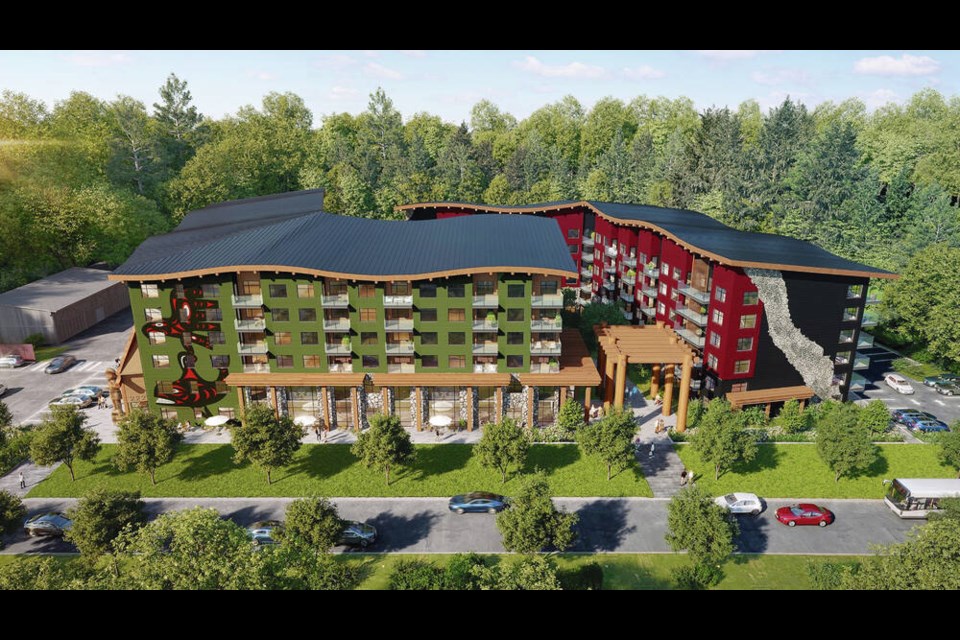A planned two-building complex featuring 199 housing units on Cowichan Tribes land is so far the only Vancouver Island project under the new B.C. Builds program announced Tuesday.
Construction is expected to start this year on the two wood-framed buildings at 222 Cowichan Way in Duncan, which Cowichan Tribes Chief Lydia Hwitsum (Xtli’li ye’) said will help the nation address its “considerable” need for housing.
The four-to-six storey buildings are expected to include housing for middle-income earners and families as well as space for offices for the nation, which has just over 5,300 members, and for Indigenous businesses.
At least 20 per cent of the housing units must rent for 20 per cent below the market rate.
The planned project, which Hwitsum describes as “beautiful,” will be developed by the nation’s Khowutzun Development LLP.
Hwitsum said the nation has been “working really hard” to develop innovative approaches and partnerships to creating more housing, with a focus on offering a wide spectrum of units, from low-barrier through to homes for middle-income residents.
“I am pleased to see the provincial government stepping up with the B.C. Builds program and partnering with us to get these homes built,” Hwitsum said.
The budget for the B.C. Builds project isn’t yet finalized, so it’s too soon to discuss costs, she said.
The province said development approvals are lined up for the project, which is located to take advantage of views of the Cowichan River and Mount Prevost and will include a play area, community gardens and areas for relaxation and gathering, the province said.
So far, 20 sites in B.C. have been identified as suitable for B.C. Builds projects. On Vancouver Island, aside from Cowichan Tribes, they include Tsehaht Nation, Port Alberni, Ladysmith and the University of Victoria.
At UVic, the aim is to explore building non-market rental housing on university-owned land to support efforts to recruit and retain faculty and staff, the university said in a statement.
UVic employs 5,000 faculty and staff, “some of whom would benefit from the type of housing offered by the B.C. Builds program,” the university said, adding specific project details are still being confirmed.
Nanaimo Mayor Leonard Krog said anything that will lead to the creation of more housing is “welcome anywhere and everywhere in B.C.”
The lack of housing is not merely a supply issue, but supply is important, he said.
“It’s pretty clear that people are actually moving based on costs of housing as opposed to career enhancement or family. That is not necessarily a good thing. Community stability is important.”
The concept of someone not being able to continue to live in the community where they were born and raised is not something people welcome, he said. “We don’t want to be losing anyone who has talent.”
Casey Edge, executive director of the Victoria Residential Builders Association, pushed back on the idea that “the B.C. government is going to build homes for the middle class.”
Spending taxpayers’ dollars wouldn’t be needed if government had not obstructed market housing development in the past, he said.
Edge said municipalities have been allowed to block housing proposals from moving forward for years, noting that while Langford has been welcoming large developments, other municipalities have discouraged them.
Factors choking housing supply include local governments allowing 100 per cent increases in development cost charges as well as other fees, taxes and regulations imposed on the development community, he said.
“B.C. Builds is another government solution to fix a problem created by government,” said Edge.


